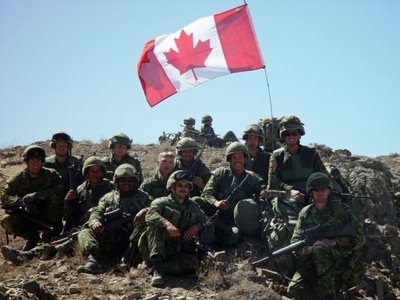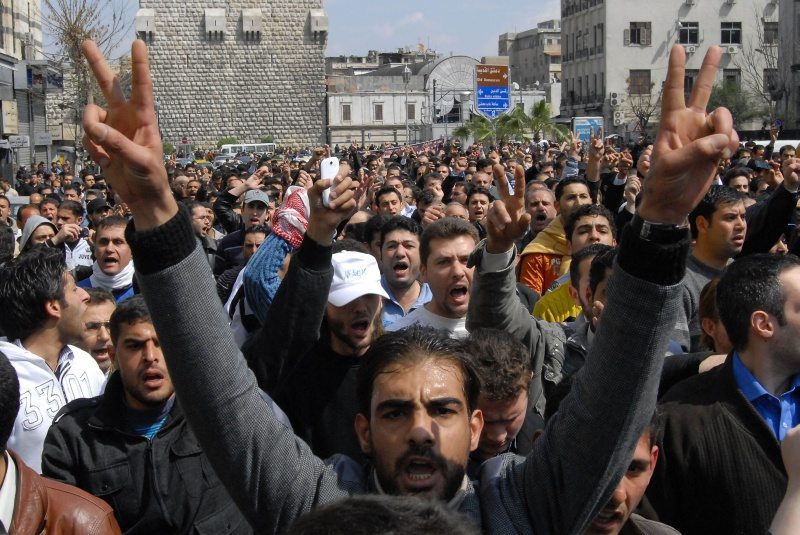Over the past decade, the Government has made a strategic investment in the Canadian Forces (CF) through balanced investments across the four defence pillars upon which CF capabilities are built – readiness, personnel, equipment and infrastructure. It has helped to develop a flexible, agile and resilient force that is both highly regarded by our allies and an enduring source of pride for Canadians.
Although operations in Afghanistan have been by far the largest, most intense and most visible single commitment during that period, the CF were also called upon to support numerous other operations both at home and abroad.
Unprecedented operational tempo
Since 2005-2006, the year when Canada took the lead on the security and reconstruction efforts in Kandahar province and when the CF established a new CF command and control structure as part of the first phase of CF Transformation— with the stand up of four Operational Commands — the defence landscape has changed dramatically and has been marked by a period of unrelenting operational pace.
In addition to conducting active operations in Afghanistan, the Defence Team also responded to a sudden major humanitarian crisis in Haiti, supported security for the Olympic Games in Vancouver and for the G8 and G20 Summits, helped Canadians in need of assistance in times of disaster, including floods and fires, provided a rapid response to the crisis in Libya and conducted other operations around the world, as well as continued with the daily provision of maritime and aerial surveillance and search and rescue capabilities.
New strategic context
During that time, the global economic and security realities facing Canada changed significantly as well. Canada and the world faced an unprecedented global economic crisis, and the global economic environment remains fragile. The global security environment has also continued to evolve and new forms of security threats and challenges have appeared in emerging domains such as space and cyber.
Taken together, this sustained level of activity and the need to meet new global economic and security challenges have put incredible and often unpredictable demands on the Defence Team, equipment, logistics capabilities and support services. They have also provided many lessons learned and valuable information that create a comprehensive picture of where the defence institution is now and where it needs to be to in order to meet the many challenges of tomorrow.
A return to a reduced operational tempo following the end of the combat mission in Afghanistan in 2011 also provided an opportunity to review our requirements, evaluate how we can rebalance our resources and assets within the Defence Team and across the four defence pillars, and ultimately adapt our structures and processes to this new strategic context.
These are very challenging priorities to balance, but the civilian and military leaders of the Defence Team have been anticipating them for some time and have taken several steps to ensure the CF is well positioned to continue deliver operations at home, on the continent and abroad.
CF Transformation
The CF Transformation process began in 2005-2006, when General Hillier, then-Chief of the Defence Staff, launched a new command and control structure to meet the challenges of the security environment at the time with the objective of making the military more relevant, responsive, and effective.
In 2010, as part of an ongoing review process within the defence institution, the Chief of the Defence Staff, General Walt Natynczyk, appointed Lieutenant-General Leslie as Chief of Transformation. With a mandate to help define necessary organizational changes to prepare the CF for the next decade, LGen Leslie headed the effort known as the “CF2020 Transformation Initiative”. He commenced this initiative in August 2010, assisted by a team of senior officers and defence civilians, and produced a set of recommendations for consideration by the Chief of the Defence Staff and the Minister of National Defence in the summer of 2011.
The timeframe
- September 2005: The first phase of the CF Transformation process begins with the announcement that new organizations will be created to support new operational requirements in the conduct of operations for the CF.
- February 2006: The new Operational Commands – Canada Command, Canadian Expeditionary Force Command, Canadian Special Operations Forces Command, and Canadian Operational Support Command – are stood up. This new CF operating structure serves Canada well in leading simultaneous domestic, continental, and international operations. Seven years later, many lessons have been learned.
- July 2011: The next phase of CF Transformation examines how the Department of National Defence and the CF work and identifies opportunities for improvements and efficiencies. At the end of the period, the Transformation Team produces a report of observations and recommendations for consideration by the Chief of the Defence Staff and the Minister of National Defence.
- September 2011 and onwards: The Transformation Report is released, providing “a 360-degree look at the Canadian Forces” (General Natynczyk). In the weeks following the release, rounds of analysis begin to show where and how certain aspects of the Transformation Report can be aligned with other complementary efforts already in progress.
Evolution of CF Transformation
This significant amount of work greatly informed the overall defence review process already under way on how to maintain the effectiveness created over the years that followed the 2006 Transformation initiated by General Hillier, while realizing a more efficient and effective way of doing CF business and meeting core defence priorities and new security challenges.
As part of this transformation, and as the logical evolution of the 2006 CF Transformation, the CF confirmed in May 2012 the launch of a revised operational command and control structure with the creation of a single command, the Canadian Joint Operations Command (CJOC).
Consolidating the activities of Canada Command, Canadian Expeditionary Force Command and Canadian Operational Support Command, this new headquarters will be responsible for conducting all CF operations in Canada, North America, and globally, in concert with national and international partners.
Built on some hard-learned operational lessons from Afghanistan and past operations in Canada and abroad, on the principles of the 2006 CF Transformation and on recommendations from several studies produced over time, the revised structure will reduce the number of CF Officers in strategic headquarters by up to 25 per cent and will make more efficient use of administrative resources. This will allow for a redistribution of CF personnel to emerging capabilities and operational demands, allowing the CF to remain ready to meet its core missions, with a focus on domestic operations.
This revised operational command and control structure will be implemented in a phased approach in the upcoming months.
Transformation efforts are about reducing headquarters overhead to produce more 21st century capability. The result will be a more efficient and agile organization that continues to be responsive to Government of Canada priorities in an unpredictable operating environment.











